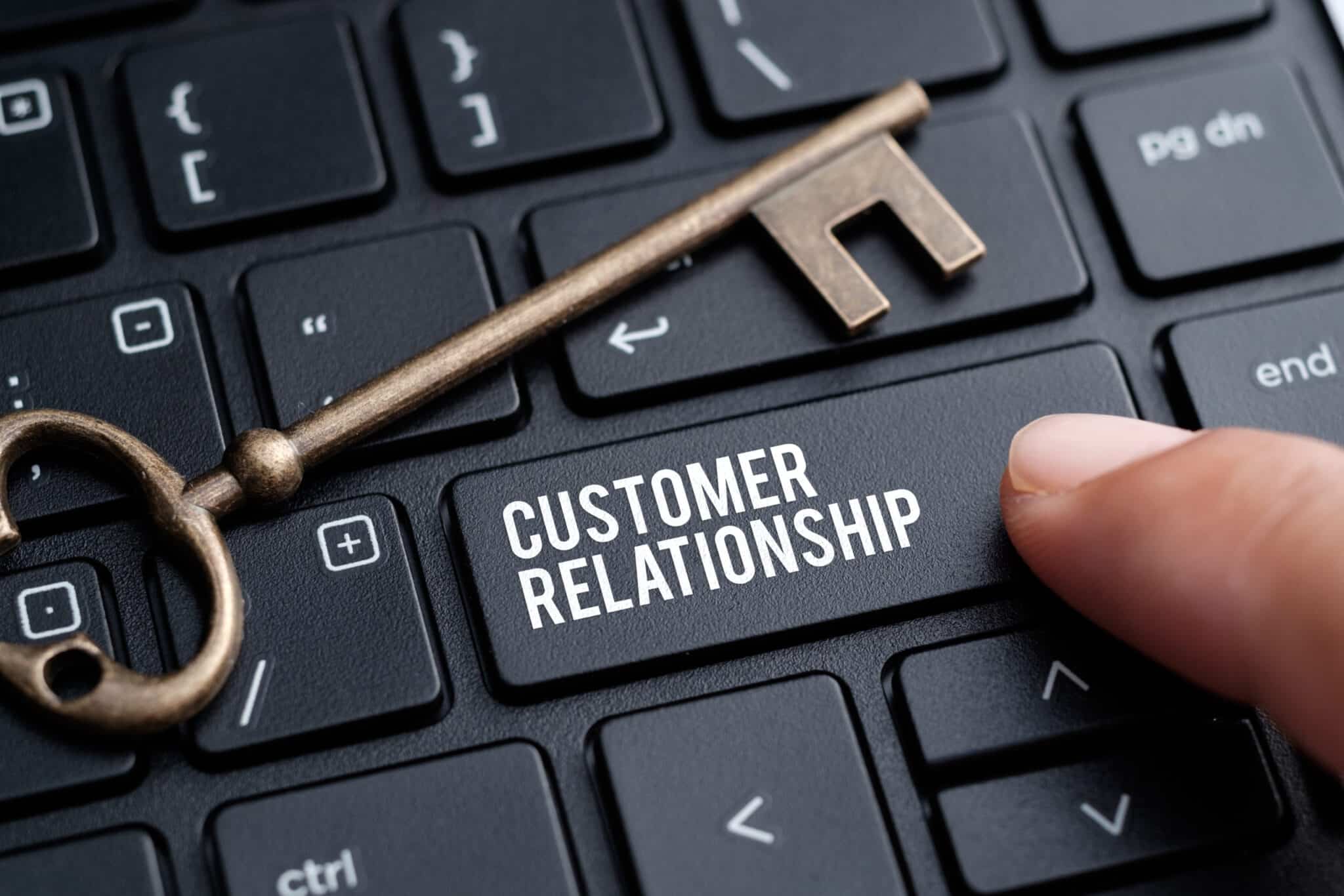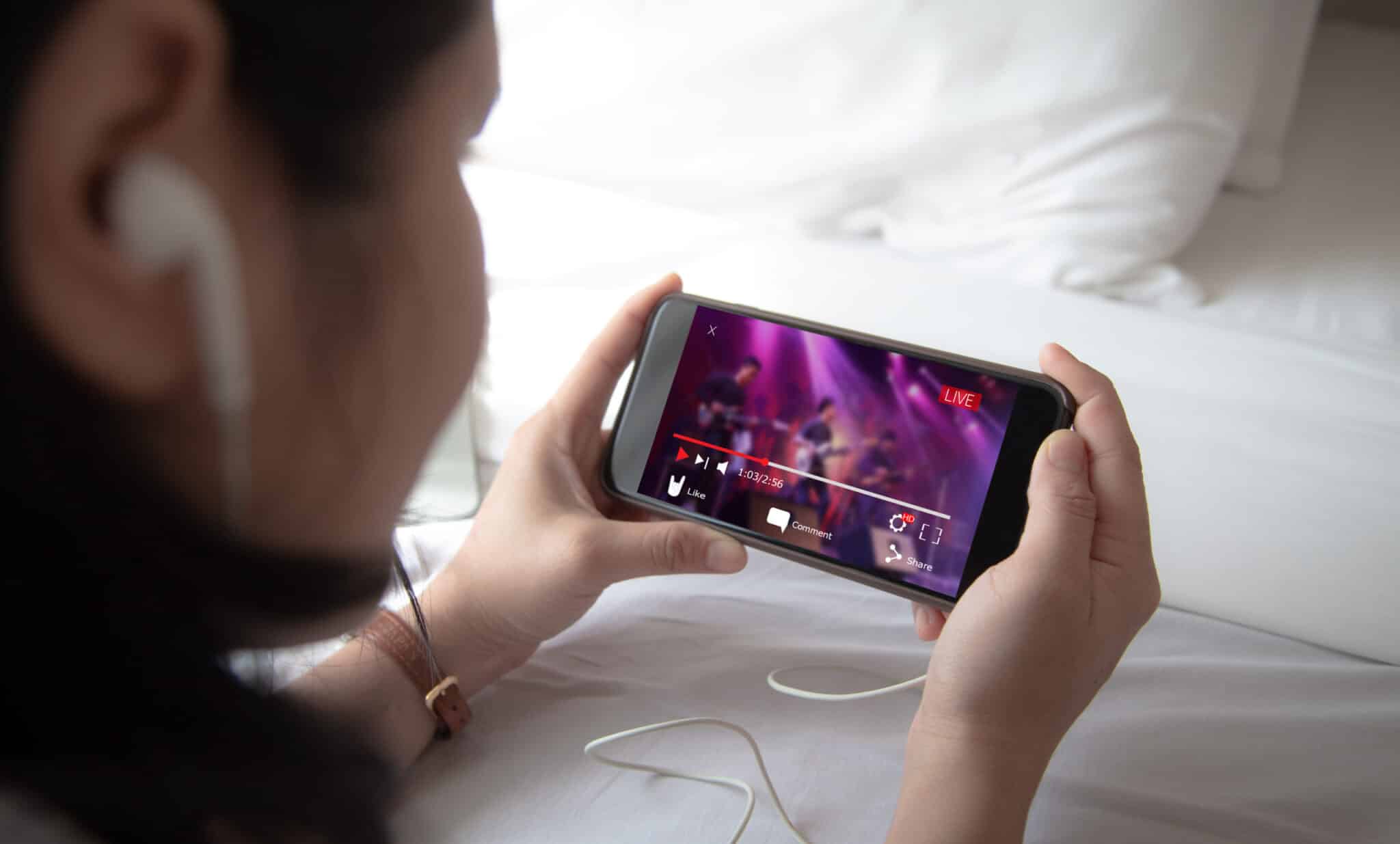Live streaming has become essential for businesses of all sizes and across industries. It is a way to connect with customers in real time through engaging content and allows businesses to reach new audiences globally.
I have been working in video marketing for over five years, and during that time, I have seen the industry evolve dramatically. The landscape has changed dramatically since the early days of creating short, low-resolution videos with limited creative control to today’s high-definition streaming services and sophisticated editing software.
With this technology’s increasing popularity comes the need to understand best practices and strategies for making the most of every stream. This guide will provide all the information you need to start live streaming for your business, from setting up the right equipment to using data-driven insights to increase engagement and reach more viewers.
What is Live Streaming?
Live streaming is a digital technology that allows real-time audio and video broadcasting over the internet. It has become an increasingly popular way to communicate with others, whether for entertainment or educational purposes.
As a result, this technology has become an innovative way for businesses to reach a wider audience with their message. It enables companies to broadcast live video content over the internet, allowing viewers to engage with brands in an interactive way.
It also allows businesses to collect valuable analytics data and gain insights into customer behavior. This data provides organizations with valuable information that can help them further their communication strategies to meet customer needs better.
Platforms Where You Can Live Stream
Live streaming has quickly become one of the most popular ways to watch content and share experiences. According to a study conducted in 2022, 23.7% of users regularly watch live content on social media.
From sports events to music concerts, live streaming platforms are being used to broadcast events and experiences in real-time.
Here are some of the most popular live streaming social media platforms businesses can utilize:
- TikTok
- YouTube
TikTok
TikTok is a global platform for creating, sharing, and discovering short videos. It is particularly popular among teenagers and young adults looking for a fun way to stay connected with their friends and express themselves through creative content.
TikTok offers impressive features that stand out from other live streaming platforms. With its innovative lip-syncing, dance challenges, and interactive video editing tools, TikTok allows users to create entertaining and highly personalized content.
Twitter is the most popular and widely used platform for live streaming. It is a social media platform that enables users to Tweet out messages, images, links, GIFs, and videos to their followers.
This platform allows anyone to easily broadcast live streams and enables remote viewers to interact through comments and tweets while watching the stream.
YouTube
As one of the most popular streaming platforms in the world, YouTube is a major media outlet for both professional and amateur content creators. The site enables anyone to upload videos, create a personalized channel, and build an audience through subscriptions, likes, shares, and comments.
YouTube offers a variety of services for both live streaming and on-demand viewing. It also provides tools that allow content creators to monetize their work by receiving advertising revenue from the site.
Additionally, it has become increasingly popular as a platform for influencers to market products or services through sponsored video ads or endorsements.
Facebook is another one of the most popular platforms for live streaming. Using Facebook Live allows users to broadcast events and activities to viewers across the globe.
Additionally, Facebook supports features like interactive questionnaires and surveys to increase viewer engagement throughout the stream.
Individuals, businesses, and organizations can use it for various purposes, including marketing, communications, customer service, and event coverage. Many entertainers, musicians, and organizations have used Facebook Live to reach millions of people with their content.
Instagram is one of the most widely used photography-based social media platforms. It allows users to share photos, videos, and stories with friends and followers.
In addition to its photo and video-sharing capabilities, Instagram offers an innovative live streaming option. Its Live feature lets people instantly broadcast their content, making it the perfect platform for engaging with their audience.
Live Streaming Benefits
Live streaming technology has revolutionized the way people interact and receive content. It offers a vast range of benefits that make it more accessible and cost-efficient than ever before.
With live streaming, businesses can use different platforms to reach their target audience effectively and efficiently. It offers unique benefits unavailable with traditional broadcasting by allowing users to access real-time entertainment, news, sports, and other events without delay or interruption.
Some of these benefits include the following:
- Increased conversions
- Increased engagement
- Live streams are memorable
- Enhanced reach and visibility
- Improved customer relationships
Increased Conversions
Live streaming can help increase conversions by providing customers with an interactive experience to learn more about your products and services. It gives customers a unique platform for direct communication with their favorite brands.
Interacting directly with viewers through live streams can result in a higher sales conversion rate as viewers are more likely to take action when presented with a product or service during the stream.
Additionally, by targeting specific audiences through targeted advertisements or promotions within the stream, businesses can better target potential customers more likely to convert at higher rates.
Increased Engagement
Live streaming has become a popular way to increase customer engagement with customers, partners, and prospects. It provides an interactive platform where viewers can watch their preferred content and participate in conversations online, making them feel more connected to the brand they support.
By providing real-time interactive experiences, companies can draw in viewers and create a platform for meaningful conversations between customers and the business.
Consumers are more likely to be engaged with a brand if they feel like their voices are being heard, which can be facilitated through interactive streaming. This ensures that the customer is at the center of the conversation, leading to greater brand loyalty and revenue growth.
Live Streams Are Memorable
Live streaming offers an incredibly memorable experience for everyone watching. It provides users with an immersive experience and allows content creators to reach a larger audience.
The platform’s immediacy makes every live stream unique, giving it a sense of urgency and relevance. With the right technology, live streams can become highly engaging events that leave participants feeling connected and inspired.
Live streams offer a personalized way of connecting with the event and its hosts by allowing viewers to watch, interact, and engage with the content in real-time.
Enhanced Reach and Visibility
Live streaming is an innovative way for businesses to increase their reach and visibility. It gives companies more control over the viewing experience and allows them to tailor content to specific viewers.
This enhanced reach allows companies to target new demographics and interact with current customers directly. As a result, users are exposed to more information than ever and can quickly gain insights that were once only available through more laborious methods.
Additionally, with the help of analytics tools, companies can refine their content by getting more profound insights into viewer behaviors and preferences.
Improved Customer Relationships
Live streaming technology has become a powerful tool in helping businesses improve customer relationships. It provides new opportunities for two-way communication, allowing for direct interaction between consumers and businesses.
This process makes it easier for customers to get their questions answered quickly and allows them to provide immediate feedback on products or services.

Additionally, live streams open up the possibility of holding interactive events, which can provide valuable insight into customer needs and preferences. By incorporating live streaming into customer relationships, businesses can create a more meaningful connection and improve customer engagement.
Live Streaming Drawbacks
Although live streaming provides businesses with many advantages, it has its fair share of drawbacks. These drawbacks can make it challenging for companies to ensure that their message is heard clearly.
Additionally, live streaming requires an upfront investment in technology, making it cost-prohibitive for some businesses.
Here are some of the main disadvantages of live streaming:
- Privacy issues
- Technical errors
- No video scripts
- Keep your audience entertained for longer
Privacy Issues
When businesses broadcast live, they give viewers real-time access to their content. This can present privacy issues for companies as viewers can see and hear everything shared.
This lack of personal boundaries regarding streaming can be concerning for many, as personal information may be at risk of being exposed without consent. Privacy settings may also be bypassed or hacked, further exposing sensitive information.
Additionally, since these streams are public, anyone can join them, leaving participants vulnerable to trolls, cyberbullying, and other unsavory behaviors.
Technical Errors
Live streaming requires a reliable connection, which can be difficult to obtain depending on the environment. This can result in technical errors or even complete drops in transmission.
These issues are often much more pronounced in live streams than pre-recorded video because the content is sent in real-time, sometimes over unreliable networks. Certain viewers may also find watching difficult due to their slower internet speeds or lack of appropriate technology.
Additionally, the quality of the stream can suffer if bandwidth or other technical limitations are present. All these factors can lead to an unsatisfactory experience for viewers who expect high-quality streaming.
No Video Scripts
One of the most significant drawbacks of live streaming is that it doesn’t always provide an environment suitable for scripting. This can be problematic since scripting is often necessary to ensure the message is expressed clearly and effectively and provide a more polished presentation.
Without good scripting, there can be pauses in the broadcast that detract from its overall quality or even miscommunications that could confuse viewers or cause them to disengage. It also helps with consistency so that each stream has a similar structure and flow, allowing the presenter and viewers to become familiar with how it works.
Additionally, scripted streams allow for better preparation on the presenter’s part, giving them time to practice delivery, think through any potential issues that may come up during transmission, and plan out their visual cues or graphics in advance.
Keep Your Audience Entertained for Longer
Live streaming has the potential to keep viewers engaged for more extended periods, but it is up to the presenter to make this happen. The key is to ensure that each stream offers something unique and captivating that will entice viewers to stay around until the end.
This could mean adding fun elements like polls or interactive games, creating compelling content, or simply engaging viewers by talking directly to them and ensuring their questions are answered by the end of the stream.
Additionally, the presenter should be conscious of their pacing and ensure they don’t move too quickly or slowly through the material. These efforts can help create an enjoyable experience to watch so that viewers are encouraged to return for subsequent streams.
How to Create a Live Stream Video
Creating a live stream video requires careful planning, preparation, and factoring in the technology needed to complete the task. Video streaming app development services provide all the necessary features and allow companies to build their own custom software products that reflect their brand.
These are the steps necessary to create a successful live stream video:
- Create a script outline
- Post a teaser
- Ensure video quality
- Stream the video
- Engage with your community
Step 1: Create a Script Outline
Creating a script outline for a live stream video is an essential step in the production process that should be taken seriously. It helps you plan what will be said and done live and provides structure and flow to the entire event.
Begin by developing a theme or idea you want to communicate through the stream. Think about what topic or topics you want to cover, how long each part of your video should be, and any other vital points you want to include.
From there, determine what content should be included, such as interviews, segments, or on-screen graphics. Additionally, organize the content logically, so it flows cohesively from one segment to another.
Posting a teaser before your live stream video can build excitement and anticipation around the content.
Teasers typically include short snippets of the footage expected to be included in the upcoming live stream, along with details about what viewers can expect from the experience. This gives them something tangible to look forward to and encourages word-of-mouth promotion.
The key to crafting an effective teaser is providing enough information to create intrigue but not so much as to give away all the surprises. An effective teaser will hook your audience and prepare them for your live stream video.
Step 3: Ensure Video Quality
To ensure a high-quality video stream, it is essential to consider the quality of both your hardware and internet connection. When setting up your live stream, use higher bitrate settings and a higher resolution camera.
Additionally, ensuring you have enough bandwidth to support the stream is vital. However, you should also select a reliable streaming service with built-in tools for adjusting quality and frame rate.
Also, ensure the audio and video equipment is correctly set up for optimal results. Lastly, test the stream before going live using various devices, browsers, and network connections to identify potential issues.
Step 4: Stream the Video
Once you’ve set up the equipment and tested the live stream, it’s time to go live. Use a streaming platform that offers reliable service and technical support for unforeseen issues or problems.

When hosting your video, choose a platform with analytics capabilities to measure your campaign’s success. Also, have a backup plan if the primary platform experiences technical difficulties.
This can include switching to a different hosting service or using pre-recorded video as a fallback option. With proper preparation, creating a successful live stream video is easy.
Step 5: Engage With Your Community
Live streaming gives you a unique opportunity to connect with and engage your community in real-time, which is essential for creating a successful live stream video.
Make sure to give viewers a chance to interact with you by providing comment boxes or allowing them to ask questions during the stream. Include call-to-action buttons at the stream’s end that link to your website or social profiles to further engage viewers.
You can also use polls and surveys to get feedback from viewers and gain valuable insights into who watched once the stream is over. Engaging with your audience can create an interactive experience that captivates viewers and keeps them returning for more.
Conclusion
Live streaming for businesses is quickly becoming necessary in today’s digitally-connected world. Not only does it provide an avenue for businesses to broadcast their events and messages to the masses, but it also helps to create more meaningful interactions with customers by providing them with up-to-date information from a reliable source.
Live streaming can help businesses build better customer relationships, increase customer engagement and loyalty, and boost their bottom line. With the right tools, businesses can easily integrate live streaming into their existing digital marketing strategies, allowing them to reap its many benefits.
Are you a small business owner? Do you have any questions about live streaming for businesses? Let us know in the comments below!
The post originally appeared on following source : Source link

